TMU's ceremonial mace gets a bold new look
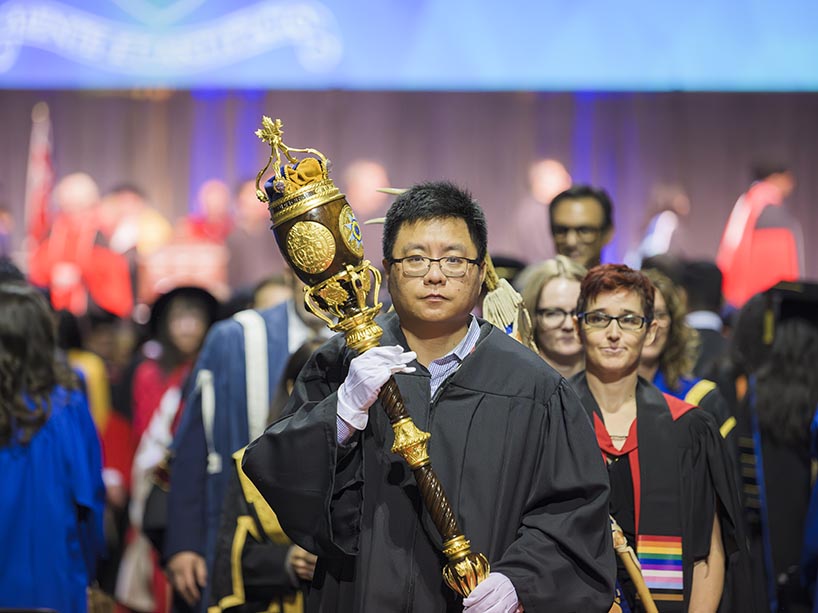
The mace, used at all TMU convocation ceremonies, symbolizes the chancellor’s authority to award degrees. The mace was recently updated to reflect TMU’s values and new name. Photo by Alyssa K. Faoro.
Thirty years after it debuted, Toronto Metropolitan University (TMU)’s ceremonial mace has undergone a big change.
The university commissioned the mace, an ornamental wooden staff used at TMU’s convocation ceremonies, in 1993. At the time, TMU was very different from the university we know today. There was no MAC or SLC or Image Centre, graduate and continuing education programs weren’t offered yet and the institution had just obtained official university status under the name Ryerson Polytechnic University.
In the decades since the mace’s debut, TMU has transformed. With a new name, new programs, a bigger campus and a commitment to Truth and Reconciliation, the university set to work refreshing the ceremonial mace to better reflect TMU’s values of excellence, inclusion, innovation and boldness.
“Rooted in the traditions of medieval times, today the mace plays a major role in all university convocation ceremonies. It symbolizes the chancellor’s authority to award degrees and stands as a beacon of academic achievement and institutional leadership,” said Mohamed Lachemi, President & Vice Chancellor at TMU. “With the new additions, the university’s mace not only reflects our history but also inspires our future.”
New design for a new era
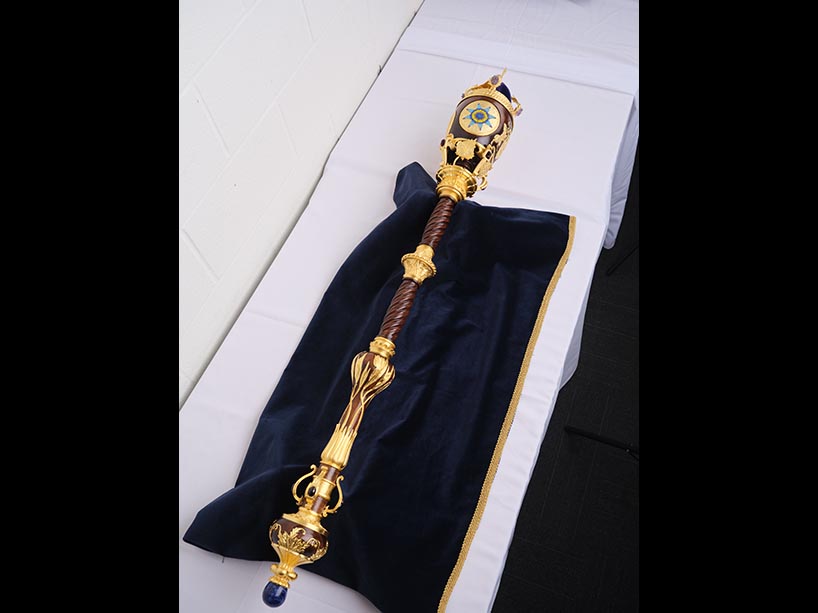
TMU’s ceremonial mace was created in 1993 and updated this past year. Photo by Harry Choi.
Several changes to the mace were recommended by a working group consisting of the Office of the President, the Office of the Vice-President, Equity and Community Inclusion, including the Indigenous Initiatives unit, and University Relations.
The new design included updating the university’s name and replacing a portrait of Egerton Ryerson. Beadwork representing the Star Blanket that the Indigenous Education Council gifted to the university in 2013 would be a new addition to the mace.
Nova Scotian artist Doug Morse, who created the original mace, was commissioned to make the changes. With blue and yellow beadwork and coloured gemstones, TMU’s refreshed mace is a true representation of the university’s past, present and future.
“Traditional decorative maces are usually gold or wood,” said Morse. “To have some color and a different medium altogether, really sets this one apart. It certainly makes a statement.”
A stroke of luck
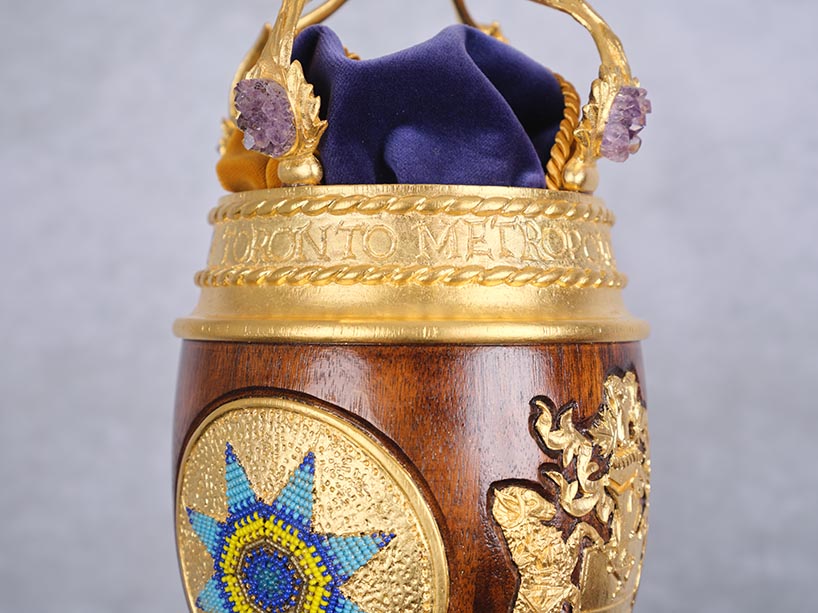
Artist Doug Morse filled in the university’s former name before carving “Toronto Metropolitan” onto the ceremonial mace. Photo by Harry Choi.
Well-known for his decades of work as a wooden sign carver and, more recently, for sculpting life-size aquatic animals, Morse found some of the changes to the mace easier to make than others.
Changing the university’s name was fairly simple since the new and old names took up the same amount of space. “I didn't have to fill in the word university. I just had to recarve Toronto Metropolitan and so that was a stroke of luck,” said Morse.
Luck also came into play when Morse found two garnet and two amethyst stones “out of the blue” that were the perfect size to finish off new brackets on the mace.
A bold statement
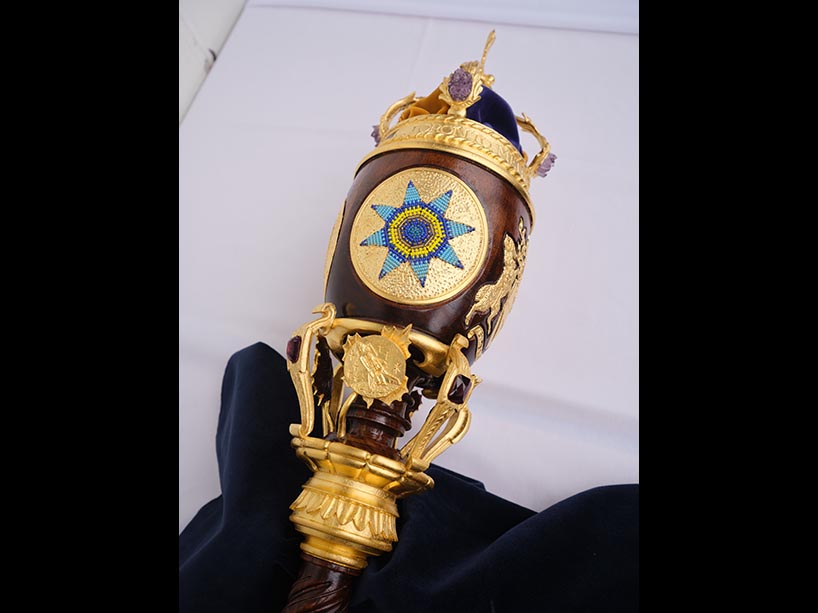
TMU’s mace features an eight-point, yellow and blue star to represent the Star Blanket gifted to the university in 2013 by the Indigenous Education Council. The star is made from six different colours of beads. Photo by Harry Choi.
Creating the image of the Star Blanket posed a greater challenge. One suggestion was to paint the image of the Star Blanket on the mace, however Morse thought it would be too difficult to paint the details on a small scale. That’s when he came up with the idea to use beads.
“The university liked the idea, but I had never worked with beads before and it was a totally new experience for me,” Morse said.
Morse began the Star Blanket image by plotting the pattern, made with six colours of beads, on a graph. When he started stringing the beads, he realized they weren’t all the same size and that he would have to make changes to his plan on the fly.
“I had to compensate here and there but I’m pleased with the way it turned out,” Morse said.
Did you know?
TMU’s mace is officially named the Howard Kerr Memorial Mace. It’s named in honour of Toronto Metropolitan University’s founder and first principal who led the institution from its inception in 1948 until 1966. A portrait of Howard Kerr remains on the mace today.
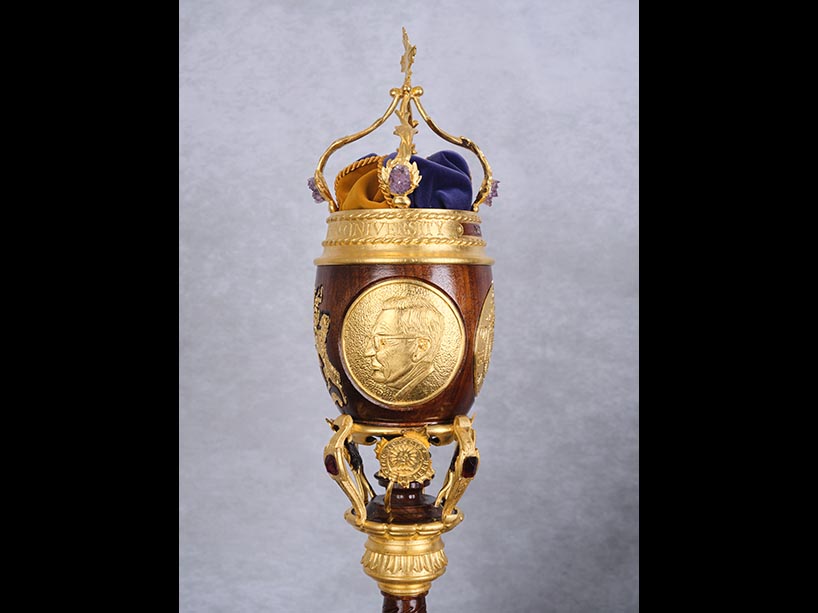
A portrait of Howard Kerr decorates TMU’s ceremonial mace. Photo by Harry Choi.
